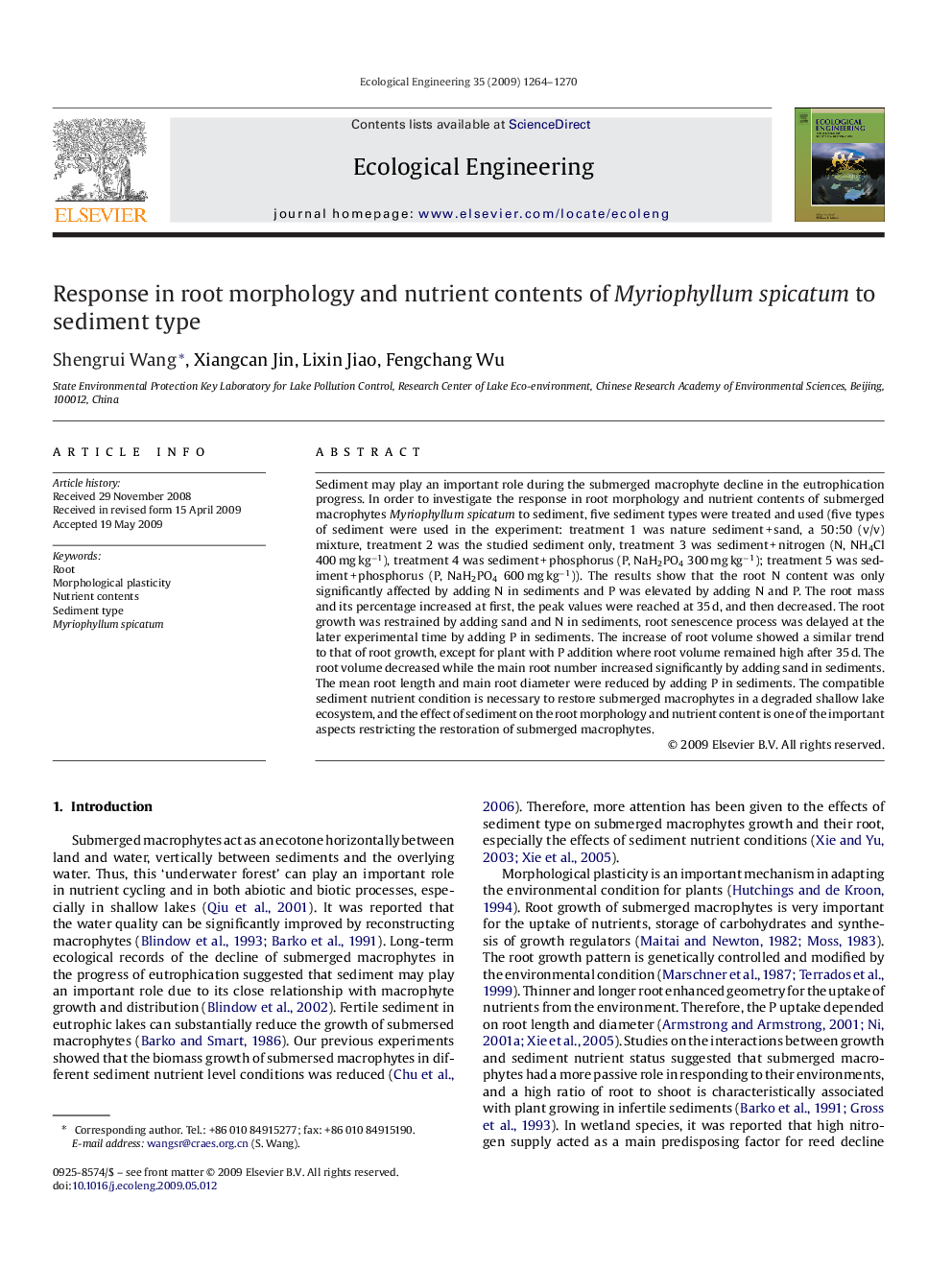| Article ID | Journal | Published Year | Pages | File Type |
|---|---|---|---|---|
| 4390846 | Ecological Engineering | 2009 | 7 Pages |
Abstract
Sediment may play an important role during the submerged macrophyte decline in the eutrophication progress. In order to investigate the response in root morphology and nutrient contents of submerged macrophytes Myriophyllum spicatum to sediment, five sediment types were treated and used (five types of sediment were used in the experiment: treatment 1 was nature sediment + sand, a 50:50 (v/v) mixture, treatment 2 was the studied sediment only, treatment 3 was sediment + nitrogen (N, NH4Cl 400 mg kgâ1), treatment 4 was sediment + phosphorus (P, NaH2PO4 300 mg kgâ1); treatment 5 was sediment + phosphorus (P, NaH2PO4 600 mg kgâ1)). The results show that the root N content was only significantly affected by adding N in sediments and P was elevated by adding N and P. The root mass and its percentage increased at first, the peak values were reached at 35 d, and then decreased. The root growth was restrained by adding sand and N in sediments, root senescence process was delayed at the later experimental time by adding P in sediments. The increase of root volume showed a similar trend to that of root growth, except for plant with P addition where root volume remained high after 35 d. The root volume decreased while the main root number increased significantly by adding sand in sediments. The mean root length and main root diameter were reduced by adding P in sediments. The compatible sediment nutrient condition is necessary to restore submerged macrophytes in a degraded shallow lake ecosystem, and the effect of sediment on the root morphology and nutrient content is one of the important aspects restricting the restoration of submerged macrophytes.
Related Topics
Life Sciences
Agricultural and Biological Sciences
Ecology, Evolution, Behavior and Systematics
Authors
Shengrui Wang, Xiangcan Jin, Lixin Jiao, Fengchang Wu,
